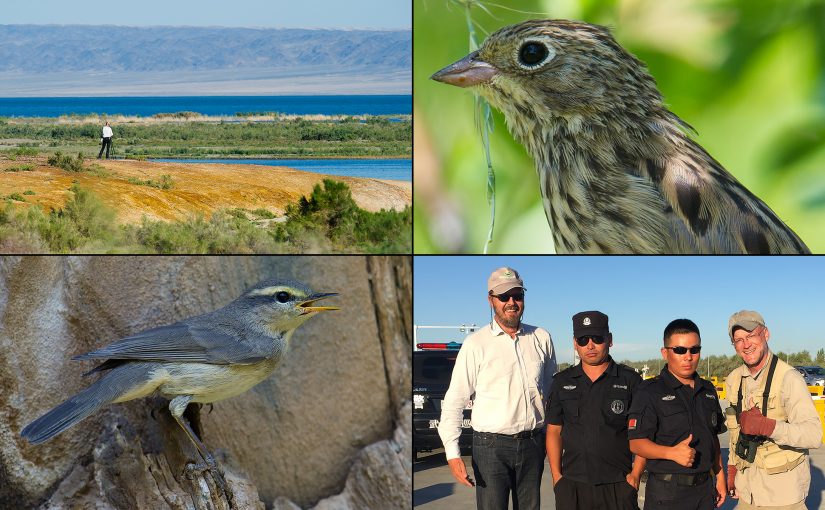by Craig Brelsford
Founder, shanghaibirding.com
This post is the first in a five-post series about my birding expedition of July 2017 to Northern Xinjiang. In the northern half of China’s largest and most northwesterly province, the birds, natural scenery, and people, including people wearing the uniforms of the state, are intensely interesting. In the photo above, top left, my longtime birding partner Jan-Erik Nilsén scans Ulungur Lake, a gleaming jewel in the arid Jungar Basin and an important stop on the Central Asian-Indian Migratory Flyway. Bottom right, friendly ethnic Kazakh police officers pose with Jan-Erik and me at one of the hundreds of checkpoints dotting Northern Xinjiang. The two birds symbolize the uniqueness of the avifauna of Xinjiang. Top right is Ortolan Bunting, representing the many species in Northern Xinjiang more closely associated with Europe than China. Bottom left is Sulphur-bellied Warbler, an unusual leaf warbler adapted to rocky habitats, and one of many Central Asian species that in China occur mainly or exclusively in Xinjiang.
In this first post, I give you an overview of my 12-day expedition and an introduction to Northern Xinjiang. In the second post, I offer you the notes I took while on the ground. The third and fourth posts are a gallery of my photos of the most interesting birds I saw, both in 2017 and during my first trip to Northern Xinjiang in May 2012. The fifth and final post is a collection of habitat shots as well as pictures of the scenery, mammals, and people of Northern Xinjiang. To read in order the five posts, simply keep scrolling down this page. You may also go to the bottom of any of the five posts and find there an index to the series.
Bounded by the mighty Tianshan Mountains to the south and the Altai Mountains to the north, and with the Jungar Basin at its heart, Northern Xinjiang is one of the premier birding areas in China. The area is still little-known to birders, and many discoveries remain to be made there. May this series convey to you the enthusiasm I have for the region, and may it aid you as you plan your own trip to Northern Xinjiang. — Craig Brelsford
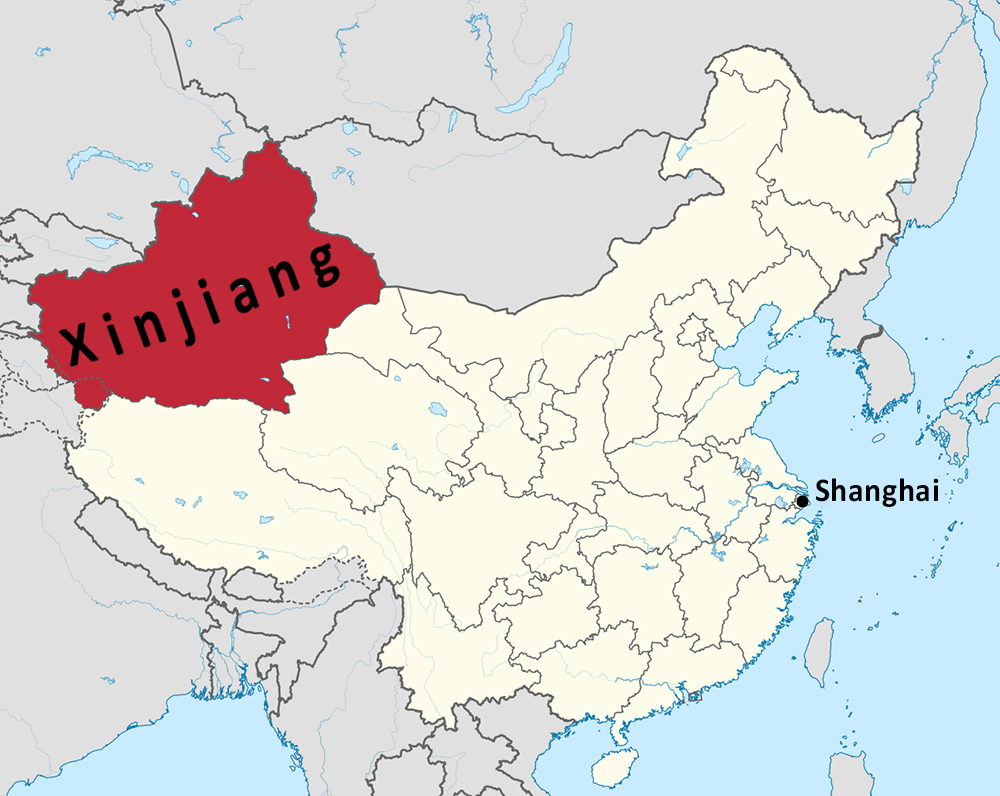
When in February 2017 my wife, Elaine Du, informed me that she was expecting our baby, I knew that my 10-year sojourn in China was coming to an end. Elaine and I agreed that I would do a final big birding trip before the birth of Tiny. I chose Northern Xinjiang.
I had visited Northern Xinjiang once before, in May 2012. I was captivated by the beauty of the region, its remote position in the heart of the Eurasian supercontinent, and the underbirdedness of the area. I vowed to return.
For the 2017 trip, I chose as my partner my friend and mentor Jan-Erik Nilsén. No birder has taught me more about birding than the Beijing-based Swedish birder, who like me arrived in China in 2007. Xinjiang would be my ninth birding expedition with Jan-Erik. We chose the dates 19–30 July 2017.
Jan-Erik, our Chinese driver, and I drove 2866 km (1,781 mi.), covering an area from the provincial capital Urumqi and the Tianshan Mountains in the south to Kanas Lake and the Altai Mountains in the north and visiting a score of Jungar Basin sites in between. We noted 160 species of bird. (For our complete list, please scroll to the bottom of this post.)
We recorded China rarities Siberian Chiffchaff, Yellowhammer, and Sedge Warbler and Xinjiang rarity Eurasian Siskin in the Altai. We scoped Himalayan Snowcock in the Tianshan, found four species of Passer at Fukang-Beishawo, ticked White-headed Duck at a bird-rich reservoir in Urumqi, saw Asian Desert Warbler and Henderson’s Ground Jay at a random stop in the semi-desert, and at beautiful Hongyanglin oasis found Common Nightingale, White-winged Woodpecker, and Sykes’s Warbler.
The latter two species were among the many Central Asian specialties we enjoyed. Others were Red-fronted Serin and Eversmann’s Redstart in the Tianshan, Eastern Imperial Eagle at Daquangou Reservoir, Sulphur-bellied Warbler in the Altai, and, at various sites in the Jungar Basin, Turkestan Tit Parus major turkestanicus.
We recorded well-known European birds that in China are found mainly or exclusively in Xinjiang. We had Common Quail and European Turtle Dove in the Jungar Basin and daytime views of European Nightjar roosting in the scrub. European Goldfinch and Common Linnet were found at both the northern and southern ends of our route, while Spotted Flycatcher, European Greenfinch, and Ortolan Bunting were recorded only in or near the Altai Mountains. European Bee-eater and European Roller were commonly seen along power lines in the Jungar Basin, and in the riparian woodlands along the Irtysh River and its tributaries, we recorded impressive numbers of Common Chaffinch and Great Tit Parus major kapustini.
July 2017 was a beautiful moment in my life. Elaine was going strong in the fifth month of her pregnancy, and I was looking forward to the birth of my son. Knowing Northern Xinjiang would be my last big trip, I savored every moment. During the long drives across Jungaria, Jan-Erik and I recalled our rich history as birding partners, which included trips to Qinghai in 2016 and 2014 and Hulunbeier, Inner Mongolia in 2015.
Northern Xinjiang was the culmination not only of my birding career in China but also of my decade-long study of Chinese language and culture. I had arrived in 2007 not knowing enough Chinese to take a taxi. By 2017, I was a fluent speaker of Mandarin. I had arrived in China convinced that the Western-style liberalization of China was at hand and that events such as the 2008 Beijing Olympics would transform the People’s Republic into a giant Taiwan. By 2017, I was viewing the Middle Kingdom much more soberly.
Northern Xinjiang was a good place to let go of my final illusions about China. Gazing at the gleaming new highways of Northern Xinjiang, noting the ubiquitous police presence and multitudes of checkpoints, and witnessing the steady influx of Han settlers, I felt the ruthlessness, growing efficiency, and grim seriousness of the Communist state. After passing through yet another security checkpoint, I said to our driver, “That was easy.” He replied, “They’re not looking for people like you.” The target, our driver said, is Uighurs.
Whereas minorities such as the Uighur face persecution and the possible extinction of their culture, the Han people I met in Xinjiang were full of civilizational confidence. In the towns and cities through which we passed, the average Han seemed happier and more polite than the Han I would meet in the crowded provinces back east. Was it the dry, sunny climate that kept them cheerful? Was it the Lebensraum that Han people enjoy living in the sparsely populated province, larger than Spain, France, and Germany combined?
To birders who may be scared off by the word “Xinjiang,” my message is, fear not; Northern Xinjiang was very much birdable in 2017. The vast region is far different from Southern Xinjiang, where most Uighurs live, and where persecution is greatest and security tightest. Indeed, the large police presence in Northern Xinjiang impedes crime of all kinds, making the region safe. As for the quality of the birding in Northern Xinjiang, let the list below and my photo galleries in posts 3 and 4 speak for themselves.
Birds Noted in Northern Xinjiang, China, July 2017 (160 species)
Note: Hyperlinks connect to entries in Craig Brelsford’s Photographic Field Guide to the Birds of China, published in its entirety on this website.
Greylag Goose Anser anser
Mute Swan Cygnus olor
Whooper Swan C. cygnus
Ruddy Shelduck Tadorna ferruginea
Common Shelduck T. tadorna
Garganey Spatula querquedula
Northern Shoveler S. clypeata
Gadwall Anas strepera
Mallard A. platyrhynchos
Northern Pintail A. acuta
Red-crested Pochard Netta rufina
Common Pochard Aythya ferina
Tufted Duck A. fuligula
Common Goldeneye Bucephala clangula
Common Merganser Mergus merganser
White-headed Duck Oxyura leucocephala
Common Quail Coturnix coturnix
Chukar Partridge Alectoris chukar
Himalayan Snowcock Tetraogallus himalayensis
Great Crested Grebe Podiceps cristatus
Black-necked Grebe P. nigricollis
Black Stork Ciconia nigra
Great Cormorant Phalacrocorax carbo
Little Bittern Ixobrychus minutus
Grey Heron Ardea cinerea
Great Egret A. alba
Black-crowned Night Heron Nycticorax nycticorax
Crested Honey Buzzard Pernis ptilorhynchus
Himalayan Vulture Gyps himalayensis
Steppe Eagle Aquila nipalensis
Eastern Imperial Eagle A. heliaca
Shikra Accipiter badius
Eurasian Sparrowhawk A. nisus
Black Kite Milvus migrans
Long-legged Buzzard Buteo rufinus
Upland Buzzard B. hemilasius
Common Moorhen Gallinula chloropus
Eurasian Coot Fulica atra
Black-winged Stilt Himantopus himantopus
Pied Avocet Recurvirostra avosetta
Eurasian Oystercatcher Haematopus ostralegus
Northern Lapwing Vanellus vanellus
Kentish Plover Charadrius alexandrinus
Little Ringed Plover C. dubius
Black-tailed Godwit Limosa limosa
Ruff Calidris pugnax
Curlew Sandpiper C. ferruginea
Temminck’s Stint C. temminckii
Terek Sandpiper Xenus cinereus
Common Sandpiper Actitis hypoleucos
Green Sandpiper Tringa ochropus
Common Greenshank T. nebularia
Wood Sandpiper T. glareola
Common Redshank T. totanus
Black-headed Gull Chroicocephalus ridibundus
Pallas’s Gull Ichthyaetus ichthyaetus
Caspian Gull Larus cachinnans
Little Tern Sternula albifrons
Gull-billed Tern Gelochelidon nilotica
Caspian Tern Hydroprogne caspia
White-winged Tern Chlidonias leucopterus
Black Tern C. niger
Common Tern Sterna hirundo
Pallas’s Sandgrouse Syrrhaptes paradoxus
Feral Pigeon (Rock Dove) Columba livia
Hill Pigeon C. rupestris
Stock Dove C. oenas
European Turtle Dove Streptopelia turtur
Oriental Turtle Dove S. orientalis
Eurasian Collared Dove S. decaocto
Common Cuckoo Cuculus canorus
European Nightjar Caprimulgus europaeus
Common Swift Apus apus
Eurasian Hoopoe Upupa epops
European Roller Coracias garrulus
Common Kingfisher Alcedo atthis
European Bee-eater Merops apiaster
Lesser Spotted Woodpecker Dryobates minor
White-backed Woodpecker Dendrocopos leucotos
White-winged Woodpecker D. leucopterus
Grey-headed Woodpecker Picus canus
Lesser Kestrel Falco naumanni
Common Kestrel F. tinnunculus
Eurasian Hobby F. subbuteo
Saker Falcon F. cherrug
Red-backed Shrike Lanius collurio
Red-tailed Shrike L. phoenicuroides
Eurasian Golden Oriole Oriolus oriolus
Eurasian Magpie Pica pica
Henderson’s Ground Jay Podoces hendersoni
Spotted Nutcracker Nucifraga caryocatactes
Carrion Crow Corvus corone
Pale Martin Riparia diluta
Barn Swallow Hirundo rustica
Common House Martin Delichon urbicum
Coal Tit Periparus ater
Willow Tit Poecile montanus
Azure Tit Cyanistes cyanus
Great Tit Parus major
White-crowned Penduline Tit Remiz coronatus
Long-tailed Tit Aegithalos caudatus
Bearded Reedling Panurus biarmicus
Horned Lark Eremophila alpestris
Asian Short-toed Lark Alaudala cheleensis
Eurasian Skylark A. arvensis
Crested Lark Galerida cristata
Eurasian Nuthatch Sitta europaea
Goldcrest Regulus regulus
Common Chiffchaff Phylloscopus collybita
Sulphur-bellied Warbler P. griseolus
Hume’s Leaf Warbler P. humei
Greenish Warbler P. trochiloides
Sykes’s Warbler Iduna rama
Sedge Warbler Acrocephalus schoenobaenus
Paddyfield Warbler A. agricola
Great Reed Warbler A. arundinaceus
Pallas’s Grasshopper Warbler Helopsaltes certhiola
Asian Desert Warbler Curruca nana
Barred Warbler C. nisoria
Desert Whitethroat C. curruca minula
Lesser Whitethroat C. c. halimodendri
Common Whitethroat C. communis
Common Blackbird Turdus merula
Mistle Thrush T. viscivorus
Spotted Flycatcher Muscicapa striata
Common Nightingale Luscinia megarhynchos
Bluethroat L. svecica
Eversmann’s Redstart Phoenicurus erythronotus
Black Redstart P. ochruros
Common Rock Thrush Monticola saxatilis
Siberian Stonechat Saxicola maurus
Northern Wheatear Oenanthe oenanthe
Pied Wheatear O. pleschanka
Desert Wheatear O. deserti
Isabelline Wheatear O. isabellina
Common Starling Sturnus vulgaris
Western Yellow Wagtail Motacilla flava
Citrine Wagtail M. citreola
Grey Wagtail M. cinerea
White Wagtail M. alba
Richard’s Pipit Anthus richardi
Tree Pipit A. trivialis
Common Chaffinch Fringilla coelebs
Common Rosefinch Carpodacus erythrinus
European Greenfinch Chloris chloris
Red Crossbill Loxia curvirostra
Eurasian Siskin Spinus spinus
European Goldfinch Carduelis carduelis
Twite Linaria flavirostris
Common Linnet L. cannabina
Red-fronted Serin Serinus pusillus
Saxaul Sparrow Passer ammodendri
House Sparrow P. domesticus
Spanish Sparrow P. hispaniolensis
Eurasian Tree Sparrow P. montanus
Yellowhammer Emberiza citrinella
Pine Bunting E. leucocephalos
Godlewski’s Bunting E. godlewskii
Ortolan Bunting E. hortulana
Common Reed Bunting E. schoeniclus
This post is the first in a five-post series about birding in Northern Xinjiang.
Northern Xinjiang, July 2017: Introduction (you are here)
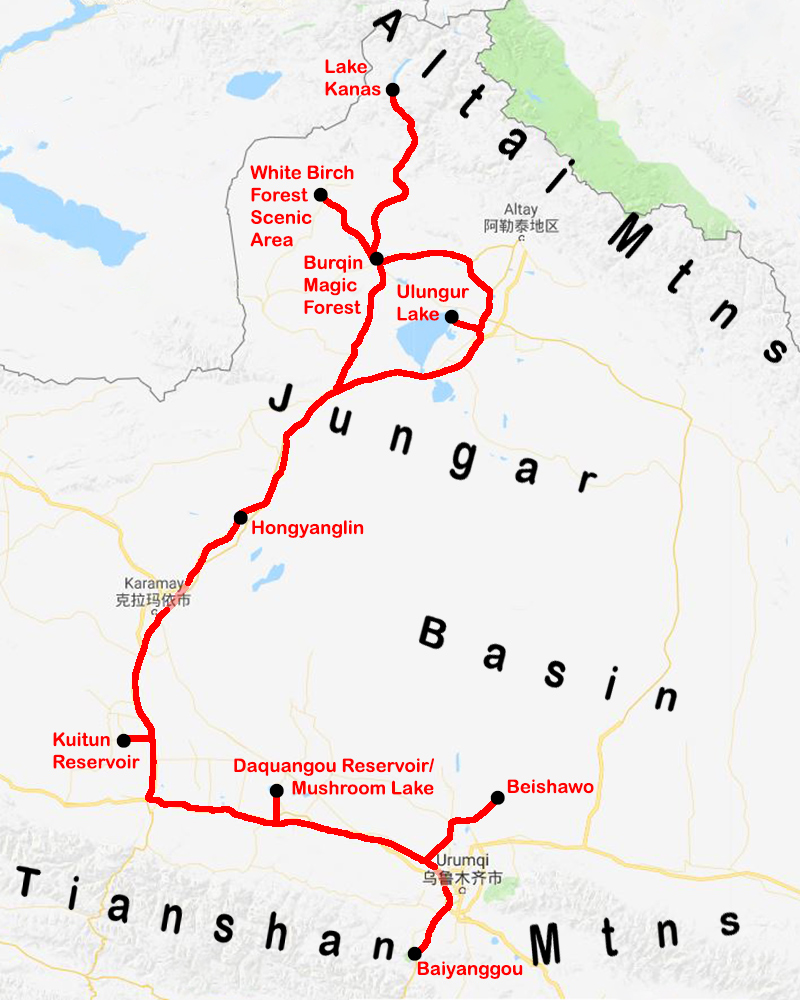
Notes on Birding in Northern Xinjiang: Read Craig Brelsford’s notes on the “European” birds of Xinjiang as well as other observations recorded during the 2017 expedition. In Xinjiang, birders are saiwai (塞外), “beyond the (Great) Wall”—in China, but not in East Asia.
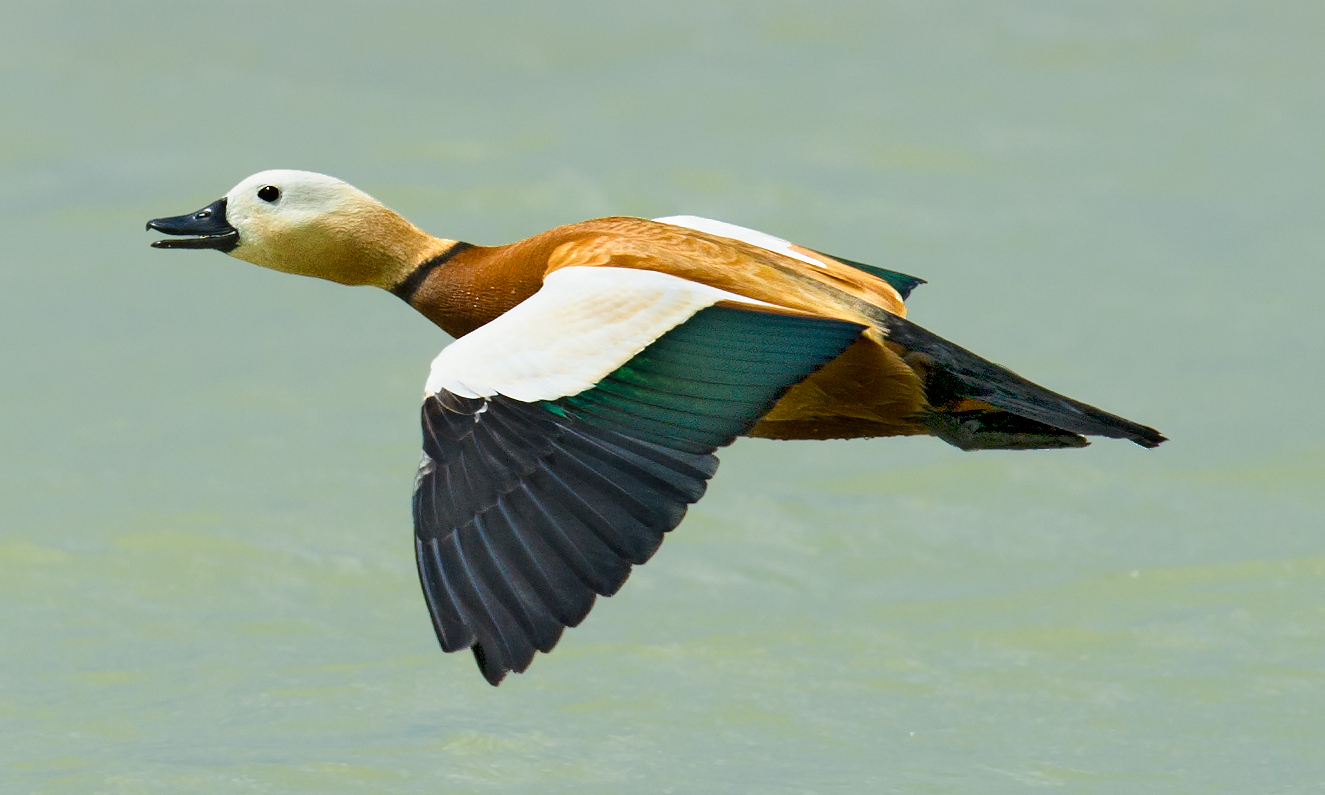 Photo Gallery of the Birds of Northern Xinjiang (Non-Passerines): This is the first of two photo galleries of the birds of Northern Xinjiang. This post covers non-passerines. Each photo in the gallery was taken by Craig Brelsford in Xinjiang.
Photo Gallery of the Birds of Northern Xinjiang (Non-Passerines): This is the first of two photo galleries of the birds of Northern Xinjiang. This post covers non-passerines. Each photo in the gallery was taken by Craig Brelsford in Xinjiang.
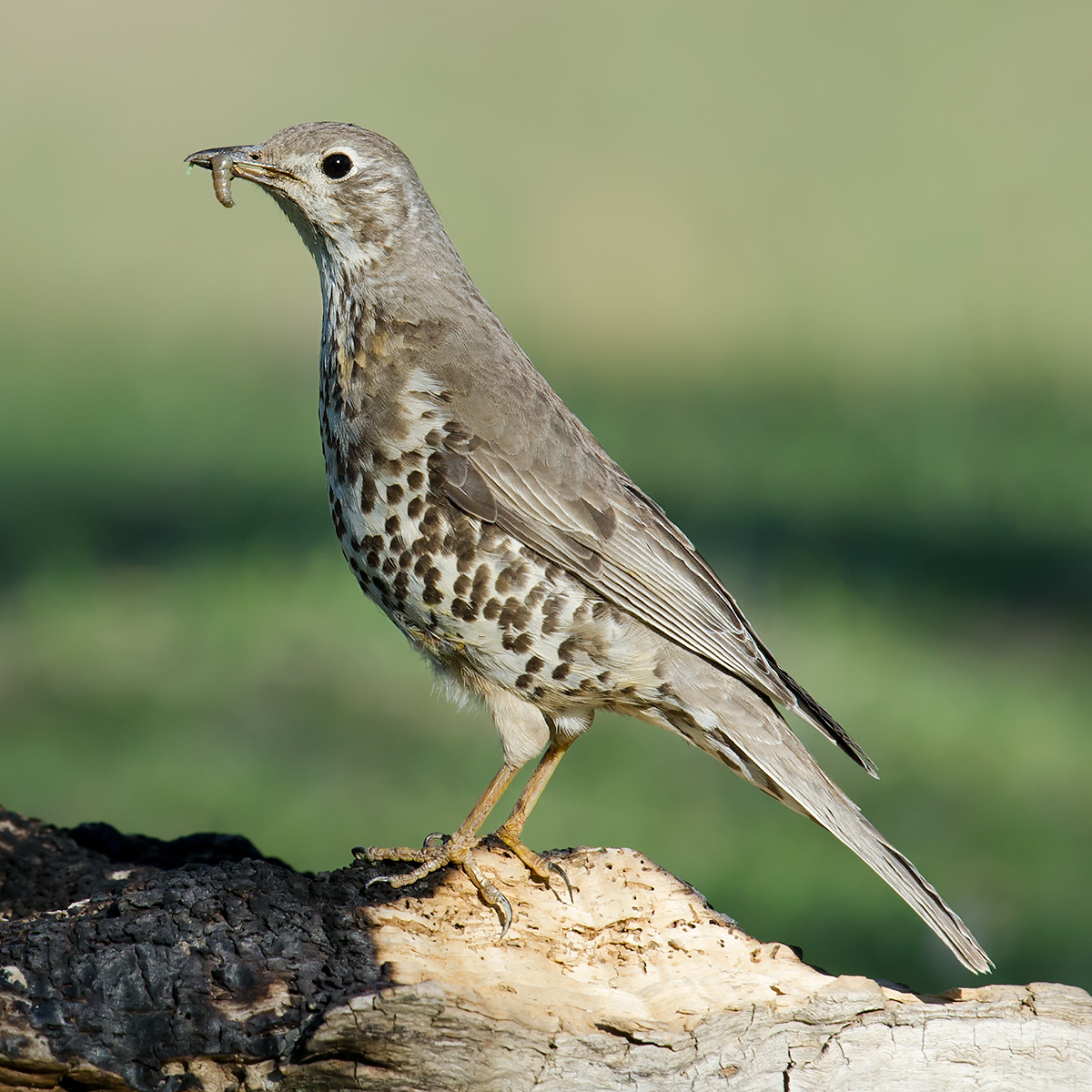
Photo Gallery of the Birds of Northern Xinjiang (Passerines): This portion of the photo gallery covers the passerines of Northern Xinjiang. Many birds well-known to Europeans, such as Mistle Thrush, were photographed by Brelsford using his state-of-the-art Nikon setup.
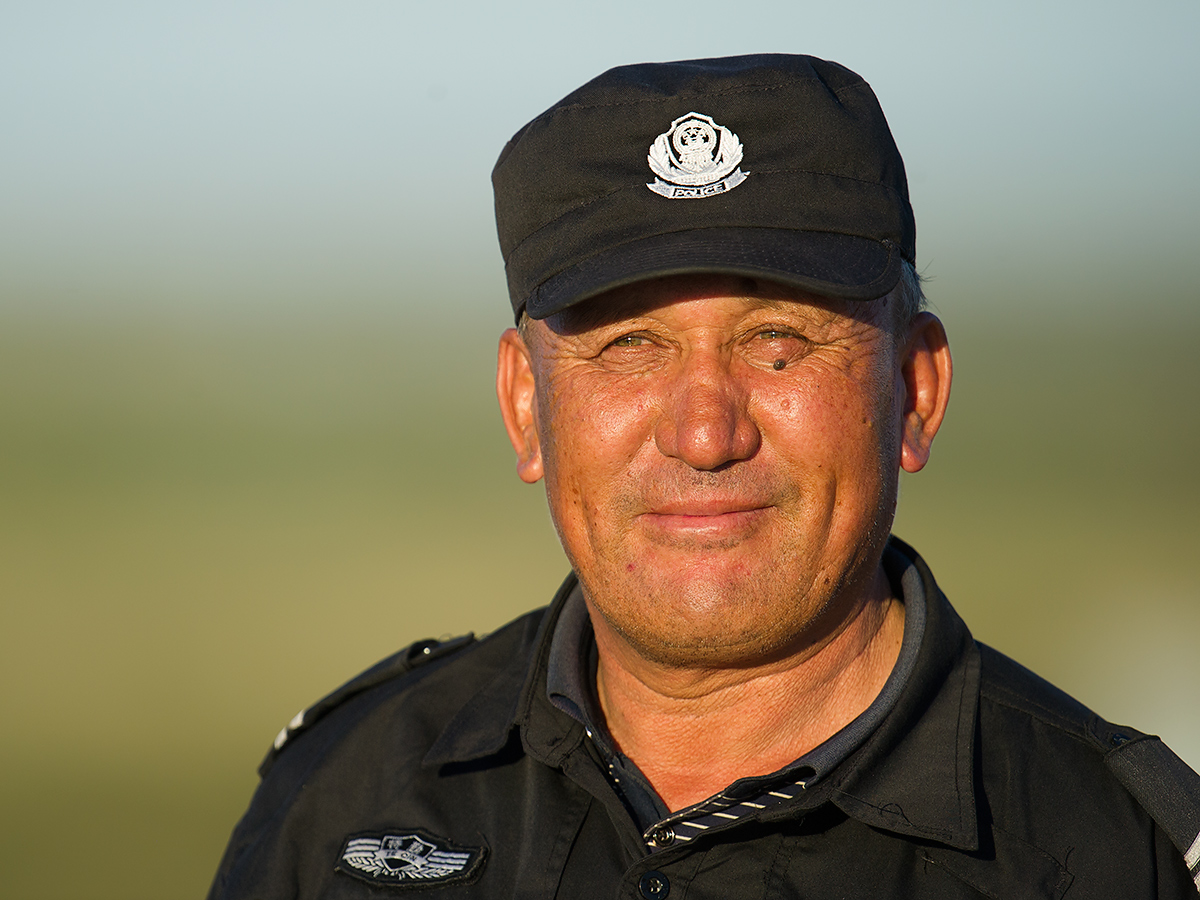
The Landscapes and People of Northern Xinjiang: Photos and detailed captions by Craig Brelsford offer a window into the habitats and people of Northern Xinjiang.
Other shanghaibirding.com posts on Xinjiang:
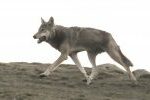
John MacKinnon in the Altai Mountains of Xinjiang: The visit of the pioneering naturalist included an encounter with wolves and records of Willow Ptarmigan and Rock Ptarmigan. “We emerged on top of the world,” MacKinnon writes, “with views way into the distance across the Mongolian border.”

